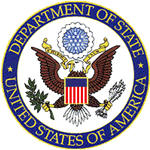 Just when you thought you had a pretty good idea of all the things that can’t be exported, the Treasury Department issued, on December 20, interim rules forbidding the export of pennies and nickels. The Department based its authority to enact this new export control on 31 U.S.C. § 5111(d) which permits the Secretary of Treasury to ban exportation of coins upon a determination that this limitation is “necessary to protect the coinage of the United States.”
Just when you thought you had a pretty good idea of all the things that can’t be exported, the Treasury Department issued, on December 20, interim rules forbidding the export of pennies and nickels. The Department based its authority to enact this new export control on 31 U.S.C. § 5111(d) which permits the Secretary of Treasury to ban exportation of coins upon a determination that this limitation is “necessary to protect the coinage of the United States.”
The justification for such a determination is the differential between value of the metals in pennies and nickels and their their face value. The zinc and copper in a penny are now worth 1.12 cents while the value of the nickel and copper in a nickel are worth 6.99 cents. According to Treasury this price differential might encourage the melting down of pennies and nickels which would, in turn, require Treasury and the taxpayer to produce new coins to replace the ones removed from circulation.
Even if there is a legitimate reason to ban the melting down of pennies and nickels, there seems much less of a reason to ban the export of these coins, particularly the penny, given the costs of exporting the coins. A million pennies, worth only $10,000, weigh 3.14 tons. Exporting those pennies would be a ton of work — no, more than three tons of work — for $1,120.
And whatever reason there may be even to fear bulk export of pennies and nickels, the proposed rules aren’t restricted to such exports but extend to the pocket change of outbound travelers. Section 82.2(a)(2) of the new rules provide an exemption for such pocket change, but only for amounts not in excess of five dollars. The notion that U.S. currency is endangered by tourists carrying out pocketfuls of nickels and pennies is, not to put a fine point on it, ludicrous.
Wayward travelers with $5.01 in pennies and nickels in their coin purses are subject to forfeiture of the loot to the United States, a $10,000 fine and 5 years in prison. Atom bomb, meet ant. Ant, meet atom bomb.

 Posted by
Posted by  Category:
Category: 

 Thanks to a
Thanks to a 

